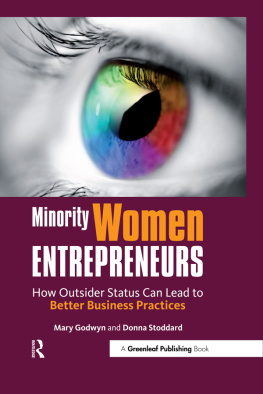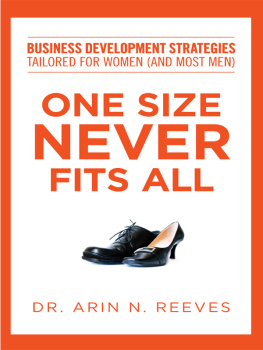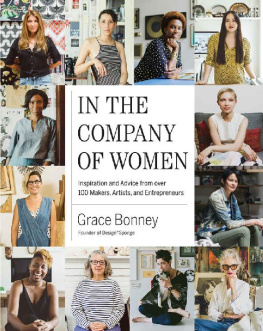Women on Top
HOW WOMEN ENTREPRENEURS ARE
REWRITING THE RULES OF BUSINESS SUCCESS
Margaret Heffernan

PENGUIN BOOKS
PREVIOUSLY PUBLISHED AS HOW SHE DOES IT
PENGUIN BOOKS
Published by the Penguin Group
Penguin Group (USA) Inc., 375 Hudson Street, New York, New York 10014, U.S.A.
Penguin Group (Canada), 90 Eglinton Avenue East, Suite 700, Toronto, Ontario M4P 2Y3, Canada (a division of Pearson Penguin Canada Inc.) Penguin Books Ltd, 80 Strand, London WC2R 0RL, England Penguin Ireland, 25 St Stephens Green, Dublin 2, Ireland (a division of Penguin Books Ltd) Penguin Group (Australia), 250 Camberwell Road, Camberwell, Victoria 3124, Australia (a division of Pearson Australia Group Pty Ltd) Penguin Books India Pvt Ltd, 11 Community Centre, Panchsheel Park, New Delhi110 017, India Penguin Group (NZ), 67 Apollo Drive, Rosedale, North Shore 0632, New Zealand (a division of Pearson New Zealand Ltd) Penguin Books (South Africa) (Pty) Ltd, 24 Sturdee Avenue, Rosebank, Johannesburg 2196, South Africa
Penguin Books Ltd, Registered Offices:
80 Strand, London WC2R 0RL, England
First published in the United States of America under the title How She Does It by Viking Penguin, a member of Penguin Group (USA) Inc. 2007
Published in Penguin Books 2008
Copyright Margaret Heffernan, 2007
All rights reserved
ISBN: 978-1-1012-0186-2
CIP data available
Except in the United States of America, this book is sold subject to the condition that it shall not, by way of trade or otherwise, be lent, resold, hired out, or otherwise circulated without the publishers prior consent in any form of binding or cover other than that in which it is published and without a similar condition including this condition being imposed on the subsequent purchaser.
The scanning, uploading, and distribution of this book via the Internet or via any other means without the permission of the publisher is illegal and punishable by law. Please purchase only authorized electronic editions, and do not participate in or encourage electronic piracy of copyrighted materials. Your support of the authors rights is appreciated.
For Felix and Leonora
Contents
PART 1
Fire in the Belly, Skin in the Game
PART 2
It Aint What We Do, Its the Way That We Do It
PART 3
The Only Failure Is Not to Try
Introduction
This is a book of stories.
But it starts with numbers.
Forty percent of all privately held U.S. firms are owned or controlled by women. This represents 10.4 million firms.
Between 1997 and 2004, privately held, women-owned businesses grew at twice the rate of all other U.S. firms.
Womens companies are creating jobs at twice the rate of all firms and are now responsible for more payroll than all the Fortune 500 companies combined.
Womens companies are growing profits faster than all firms.
Womens companies are more likely than others to stay in business, while companies owned by women of color are four times as likely as others to stay in business.
Every day in America, 420 new women-owned businesses are formed.
These are phenomenal numbers. They defy logic. The business world isnt a level playing field, and women receive far less in the way of institutional investment and Small Business Administration (SBA) loans than other businesses. And they receive only 5 percent of all venture capital.1 So not only are women doing really well, but their businesses are thriving when the playing field is tilted against them. That makes these numbers all the more incredible.
Naysayers, skeptics, and curmudgeons will try to tell you that this isnt really meaningful. After all, theyll say, only 4 percent of women-owned businesses have revenues over a million dollars. True, but only 6 percent of all businesses have revenues over a million dollars. Ninety-nine percent of Americas businesses are small companies, and they provide more than half the jobs. Small is not trivial. Moreover, womens companies with revenues over a million dollars and womens companies with more than a hundred employees are growing at twice the rate of all companies. There are therefore more of those bigger women-owned companies every year.
But, theyll go on, womens businesses arent really where the action is. Theyre all cookie companies, bed-and-breakfasts, and funky little boutiques. Wrong, wrong, wrong. The biggest growth sectors for womens businesses are: wholesale trade, health care services, arts, entertainment and recreation, and professional, scientific, and technical services. In the economy overall, the highest growth isnt in the tech sector but in the services sectorright where the women are.
But, the pessimists persist, women arent really risk takers. This argument collapses in the face of the evidence that women take on more personal debt to fund their businesses than men do, and theyre generally more willing than men to go out on a limb. Cautious they may be, but risk-averse they certainly are not.
Defeated by the facts, curmudgeons will point to Martha Stewart with a flourish. Theredoesnt she prove that women just cant cut it? But hers is one story out of ten million. The trend says so much more than the headline, and that trend has real momentum. The more women-owned businesses succeed, the more respect and funding they are starting to get. The more funding they get, the more they can succeed.
That their companies are doing so well says a great deal about female strengths and talents. As long as women continue to slug it out in traditional companies that were built by men for men, much of their energy will go into fitting into those cultures. It is a big drain on resources. But once a woman runs her own company, that drain evaporates. These phenomenal numbers show just how effective women can be when they work on their own terms. They also demonstrate just how much talent those traditional corporations lose when their women give up on them.
The growth and success of women-owned businesses is one of the most profound changes taking place in the business world today. It challenges us to ask: Why? What do women do to make their businesses so successful? With so many companies doing so well, how can you explain that success? And what lessons can we all learn from them?
Those are the questions that this book seeks to answer. When I set out to study a representative group of companies, my sample needed to include both new and established companies. It needed to represent all the major industrial sectors and to have a broad geographic spread. I wanted it to be broadly reflective of the modern economy. I didnt go looking for exemplary companies, and I didnt start with any predefined criteria except that each company had to be majority owned or controlled by a woman. Taking these companies as a whole, I then asked myself what meaningful characteristics they had in common. I didnt embark on this quest as an academic but as someone who has run five businesses herself. Having stood in a CEOs shoes, I have some insight into what is required to build a business from scratch: the nightmares, sleeplessness, and worry that some small misstep will prove to have enormous unforeseen consequences.
Talking to hundreds of women business owners, I came to see a number of patterns, common themes that persisted regardless of industry, company size, or age. The differences between the companies are huge. Some are run by highly trained intellects, some by high school dropouts. Some are family businesses; others will never be. But far more striking than the differences were the similarities.










